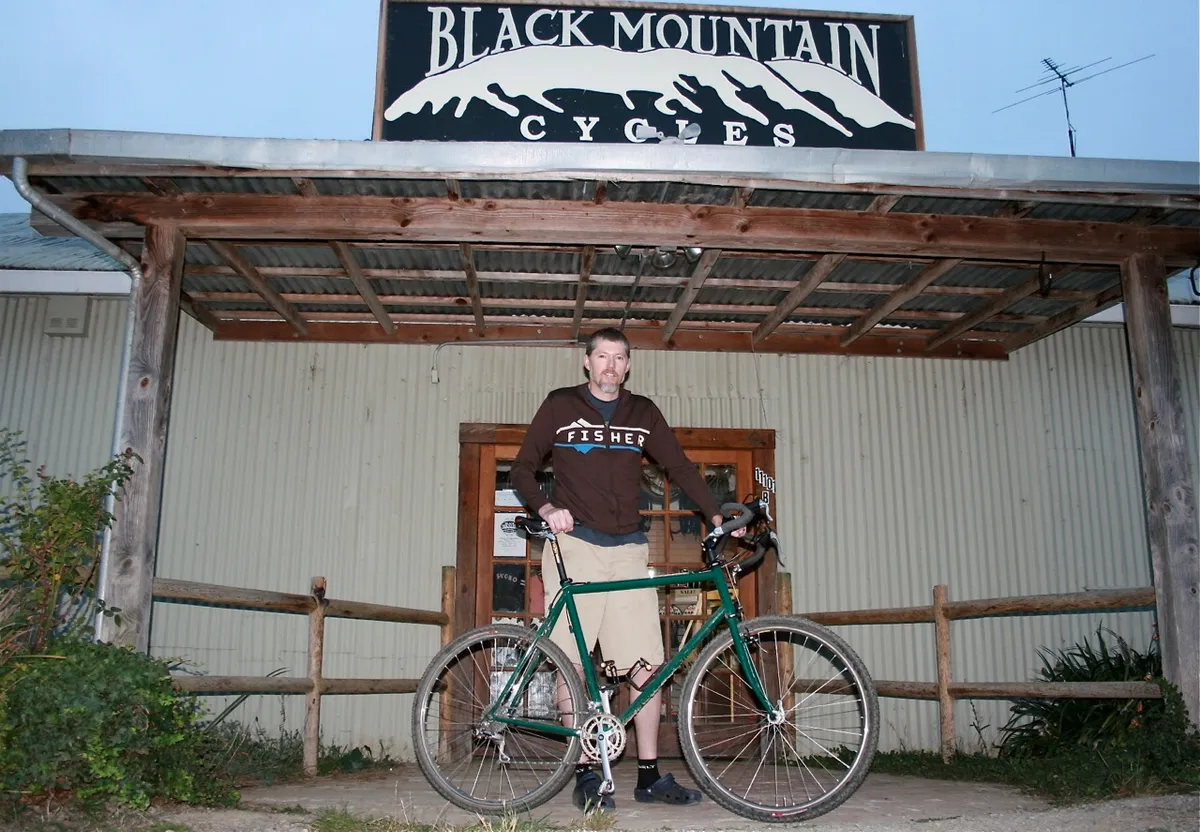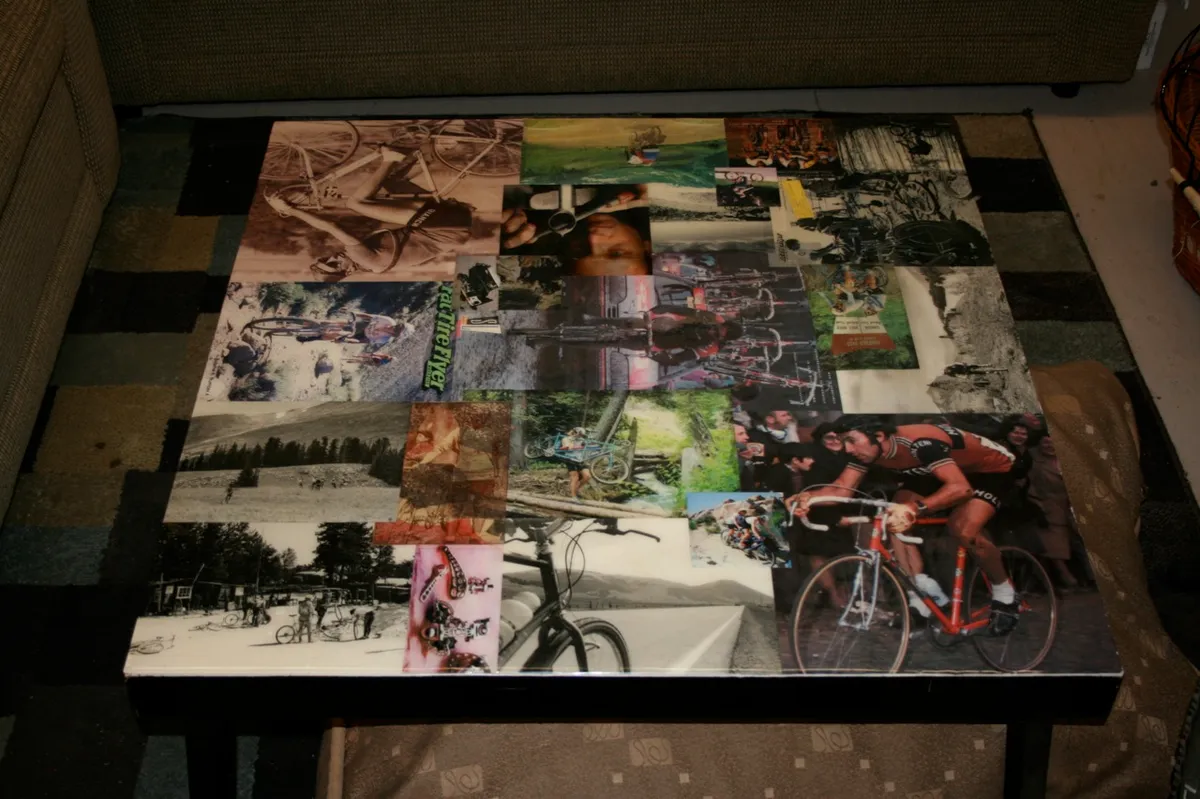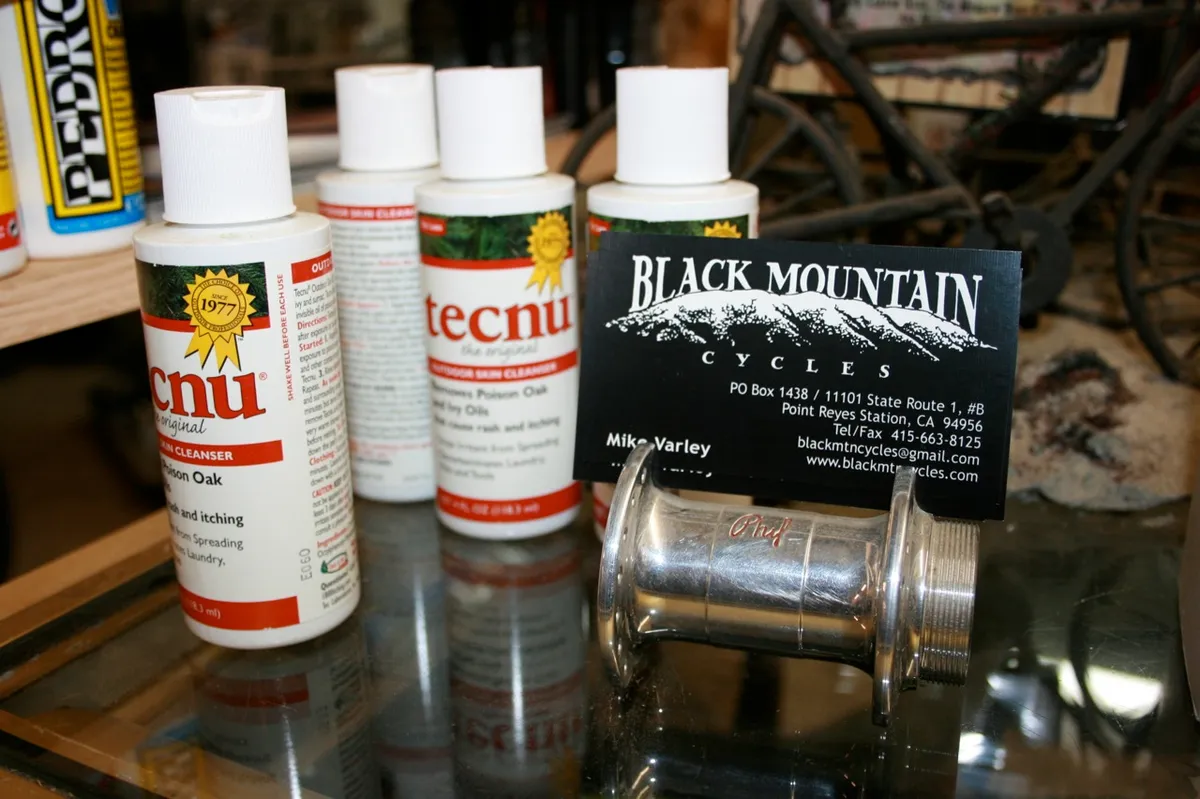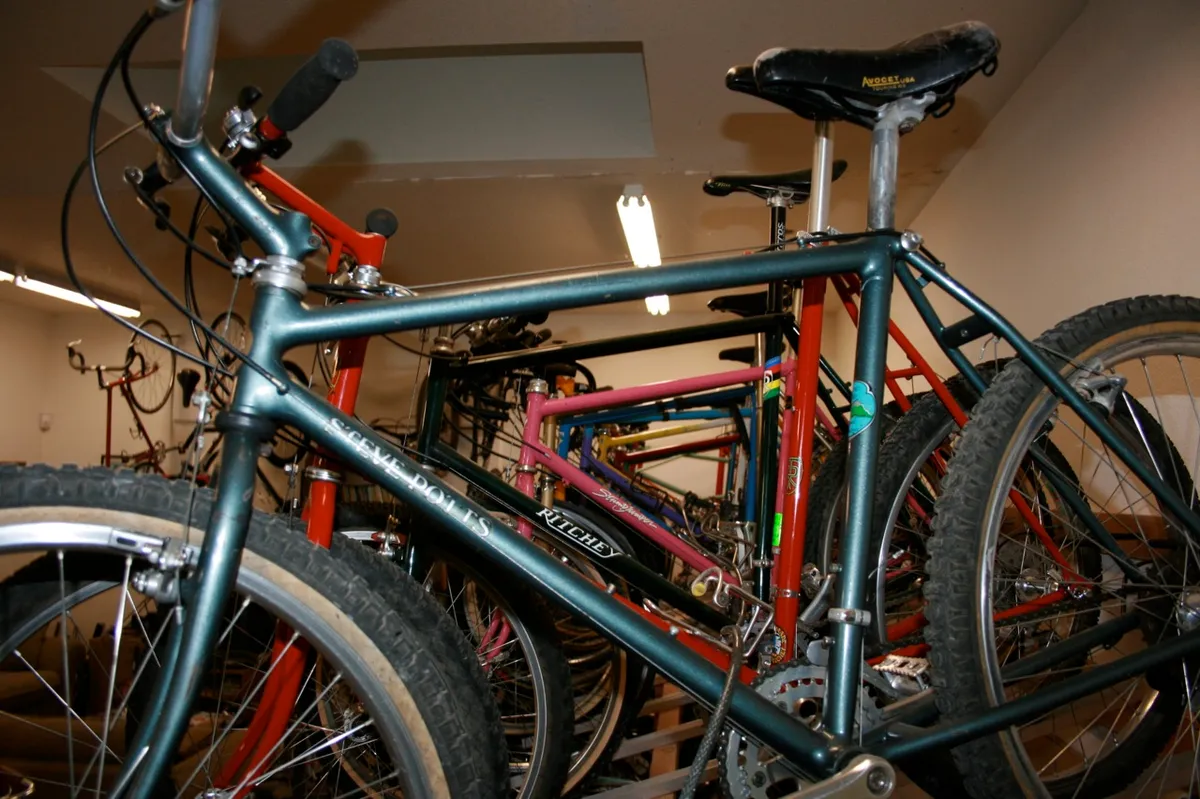Bicycle designer and shop owner Mike Varley has benefited from working closely with many of the American mountain bike pioneers. In late 2006 he left Haro to start his own company in Point Reyes, California, a small coastal town 45 miles north-west of San Francisco.
Black Mountain Cycles, located on State Route 1, a popular thoroughfare for touring cyclists making their way along the coast, is a one-man shop that attracts the unique and accepts the unusual, evident by Varley's living museum of classic Ritchey, Salsa, Merlin, Ibis and Potts bikes lining the showroom display racks.
Set in the shadow of nearby Black Mountain, 46-year-old Varley's shop is also a front for his soon-to-be-released house brand, Black Mountain. BikeRadar sat down with Varley to talk about his experience, his depth of knowledge and his future plans.
BikeRadar: Tell us why you decided to open Black Mountain Cycles. Why Point Reyes, California?
Mike Varley: I'd always thought that a bike shop should also have its own brand of bikes. Now it's fairly easy to create your own frames if you have the contacts like I have, and I found inspiration in Cycles Gaansari in Dayton, Ohio (full disclosure: the shop was owned by Gary Boulanger ed). I thought what they were doing was pretty cool, the way they developed the Gaansari brand. I was starting to grow a little tired of creating model-year bikes at Haro/Masi after 13 years, so it was refreshing to go back to my bike shop roots.
I got to the point where I had so many parts to consider with every new Haro model that I started thinking more about the simplicity of the other bikes in my garage: Ibis, Potts, Bridgestone. The 29er movement also brought about my desire for more simplicity (Varley designed the Haro Mary ed). The 29-inch wheels prompted designers to refocus on the frame. Many of the early 29ers were made of steel, and the emphasis on suspension was taken away.
Tell us about the Haro Mary.
I designed my first 29er in 2003/04 after talking with Mark Slate at Wilderness Trail Bikes (WTB). He helped me understand the 29er geometry better, providing frame drawings. I had two prototypes made, which I think were the first full-suspension 29ers. Four inches of travel in back. A great riding bike.
I couldn't get the full-sus 29er pushed through production, but it was hung up. The steel Haro Mary hardtail made it through production in 2006, based on the Creedance Clearwater Revival song Proud Mary: 'big wheels keep on turning ..." you know? Then On-One comes out with the Mary handlebar! I asked Brant Richards (owner of On-One) about using the Mary name and he agreed. I ended up speccing the Mary bars because they were so good, a perfect fit for the bike. I just like the simplicity of the 29-inch wheel; keeps me honest with my riding.
Where do you hope to take your BMC brand? What types of bikes are you working on at the moment, and when can folks expect to see your handiwork available?
Having my own brand gives me an exclusive in the Bay Area, which is also a good way to promote my shop. It will help express my opinion on what makes for a good riding bike. This was the same formula for success that we enjoyed at Pacific Coast. I also get to create a frame for myself!
I'm working on a road frameset, track frameset, 29er, 'monster-cross' frame and 650B mountain bike frame. Graphics are finalised, and I'm hoping to have samples in early 2009. My blog has a decent following, so I'll post pictures and descriptions there.
I converted an old mountain bike frame to 650B wheels and I had folks visiting my website from all around the world! Talk about a renaissance. The whole hand-built bicycle movement is another I'm following closely.
Tell me a bit about the bikes you own, and how you came to acquire them.
My stable includes bikes from Ritchey, Salsa, Ibis, Potts, Bridgestone and a few others. I bought most of them new, and kept adding to the stock. I'm grateful for the storage capacity I've had over the years, and they mean a lot to me, like the Salsa I rode across the country in 1989. Not too long ago I bought a Merlin frame with WTB components, similar to those we would have sold at Pacific Coast.

A rare, limited-edition Salsa/Merlin owned by a friend of Varley's
Do you ever feel like you're hoarding the good stuff?
No, certainly not (laughs)! The bikes I have get conversations started about old bikes from Ritchey, Cunningham, Potts, Ibis, Otis Guy, Specialized ... The difference is, these people ride their bikes hard, they don't keep them as museum pieces.
Many of my customers have the skill to ride anywhere, and they choose to keep their older bikes rolling because the bikes are smartly designed and are made to go anywhere. Remember Salsa's motto? 'If it ain't moto, it's worthless!'
Describe the ideal bike ride for you these days.
Leaving the house on a 700c bike with skinny knobbies and drop bars, riding on the road to a dirt/fireroad climb, up to a ridge with some singletrack, more dirt, a descent on a paved road, back to a ridge. Spending a couple hours enjoying it all.
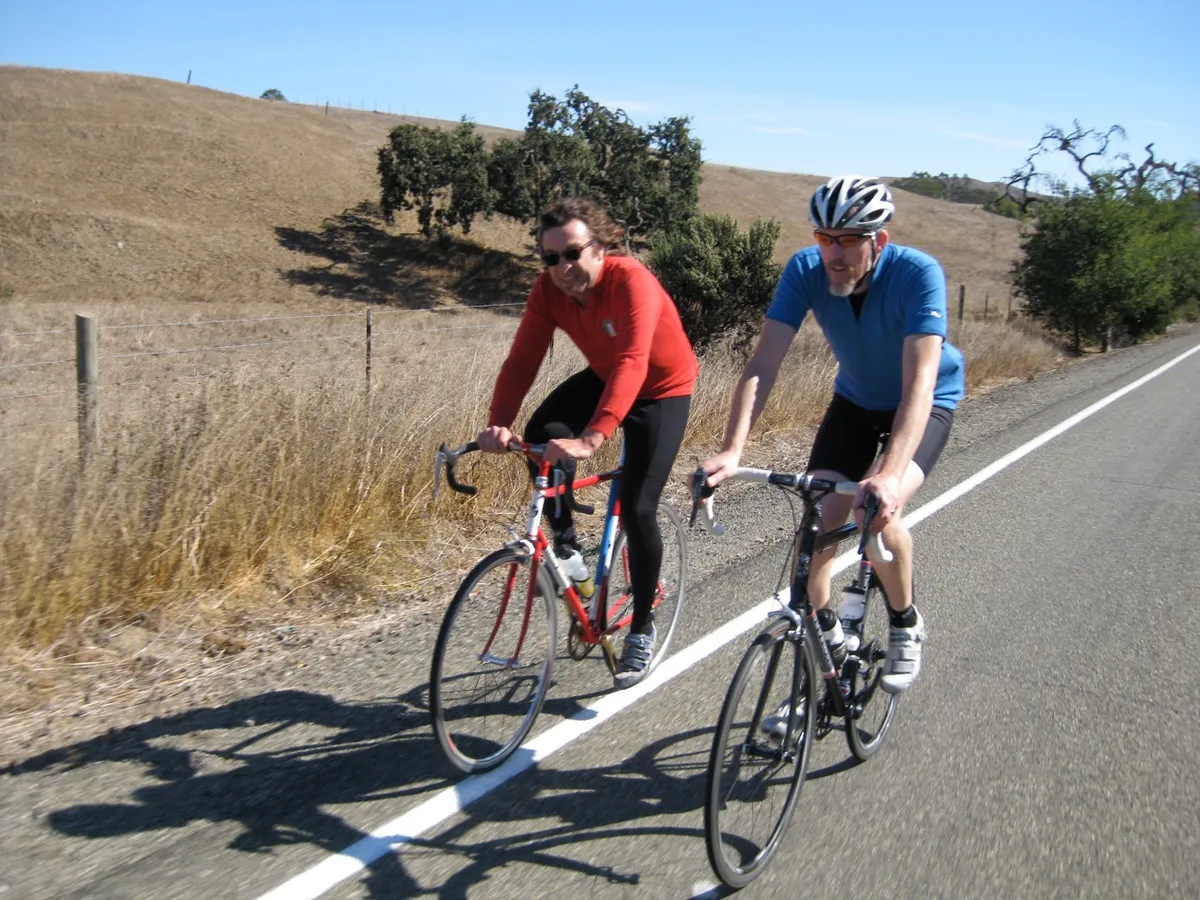
Salsa founder Ross Shafer (L) shares saddle time with Mike Varley in Marin County
Two water bottles, peanut butter sandwich, saddle bag with the essential tools, especially for fixing broken chains. My jersey has three pockets, and my seat bag carries my tools. The riding around Point Reyes, California, is amazing.
Tell me about your earliest days working at Pacific Coast Cycles in Oceanside, California. There's plenty of history at that shop, starting with Chuck Hoefer working for Masi beforehand, right?
I was a manufacturer's rep for a lighting company, and I bought a bike from Chuck when everyone down there was buying mountain bikes, in 1986 or so. I'd bring my bike to ride at lunchtime, which the bosses didn't like. I hinted to Chuck that I was interested in working for him, even though I was making good money for the lighting company and had a company car. He hired me for $7.30 an hour in 1988! I had enough mechanical ability but was teachable, which Chuck liked.
He had owned the shop for about 10 years by that time?
Yeah, it was an established shop before he bought it. He worked for Masi America, Talbot's and Santana, where he met Salsa founder Ross Shafer. Chuck is still going strong in his early 60s! For a small shop and small staff he has a good track record of prepping guys for the bike industry.
What are some of your fondest memories from that era?
Index shifting just happened, and our shop sold custom high-end bikes from Salsa, Cunningham, Ritchey, Fat Chance, Merlin, Potts, Ibis, and we specced out several cool bikes for customers. We were also the first Specialized dealer in San Diego county. That's what gave me experience later in my career: the proper way to spec bikes.
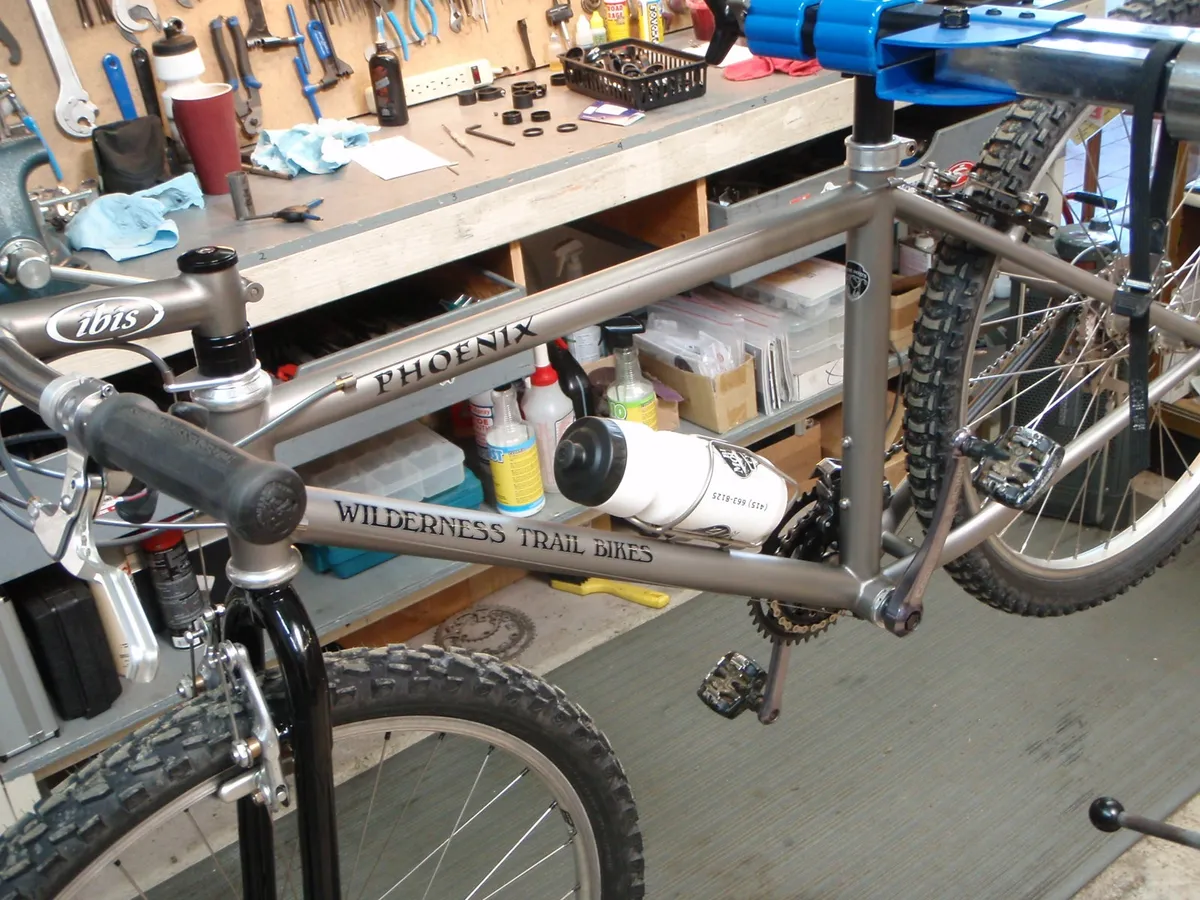
A titanium WTB Phoenix, made by Steve Potts
We had a monthly newsletter, led monthly rides, and back then, if you saw someone on the trail you knew them! We had customers come to Pacific Coast from Los Angeles and Las Vegas because of our service and brands. I remember selling Bontrager and Pinarello as well.
What size shop was it?
We had about 1,700-1,800 square feet of space. It was definitely a mechanic's shop – we staffed mechanics who doubled as salespeople. This is my idea of an ideal bike shop, one that is driven by the mechanics. Grease on the hands and oil on the floor!
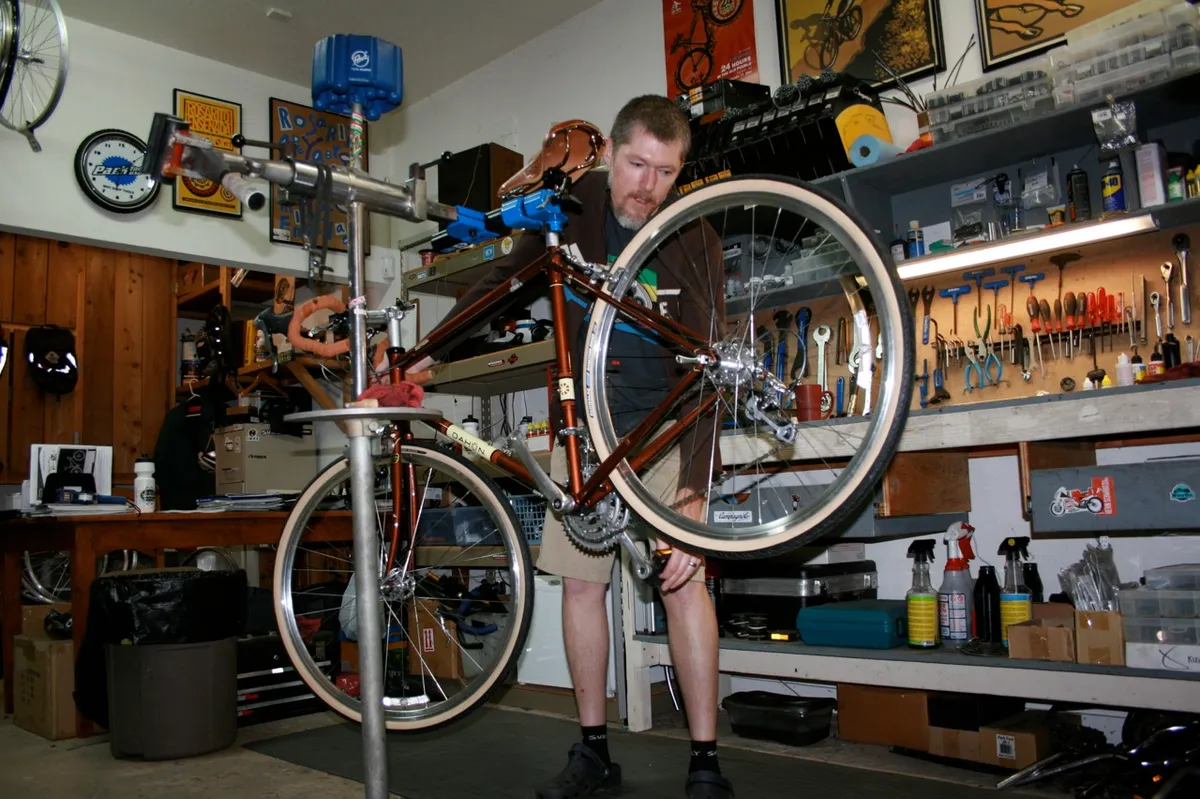
Varley likes the feel of oil on the floor and grease on the hands
It's a good way to build trust with the customer...
Exactly! Trouble-shooting or dialing in a bike for someone while they watch is satisfying, but it's hard to charge full price for a quick repair.
Did Pacific Coast ever do mail order? The first Point Reyes Bike Shop did plenty.
No, but we took care of customers who moved away, especially those who wanted WTB roller cam brakes, hubs or dirt drop bars.
When did you realise it was time to leave the retail world and get into the product development side of things with Haro?
When I realised I'd like to have weekends off! There comes a time in the bike industry when you want to learn something at the next level. I read something in Bicycle Retailer & Industry News that a management group was planning to buy the Haro brand from Derby. I called Dean Bradley, who was the first editor at Mountain Bike Action before working at Haro, and mentioned I was interested in working with him. He said: "Funny you called; I was just thinking about you." Their office was only a few miles away from our shop. That was 1993.
I was involved with the warranty department, inside sales, international sales – whatever they needed me to do. Two years later, after Dean left, I took over product development of BMX, mountain bikes, everything. After leaving Haro, Dean went to Schwinn, then Giant. He's at Electra now.
Cycling writer Maynard Hershon has written extensively about Chuck and Pacific Coast Cycles. How did that relationship come about?
Maynard wrote about Chuck, but I'm not sure how they connected. I know Maynard lived in the Bay Area back then. It's safe to say there weren't too many hip and cool bike shops in the US at the time, and it was natural that Maynard heard about Chuck's place. They both liked motorcycles, so they shared a lot in common.
Tell me about the early years of mountain biking, and some of the characters you've known from that era.
You got to know some of these guys because they were the ones you'd talk to when you called and ordered parts. Before I started working at Pacific Coast, Chuck and I helped Baja Expeditions in Baja, California, figure out how to take paying customers out on rides. I assembled their rental fleet of bikes, which was, essentially, my first paying job as a mechanic, and then I accompanied them on an exploratory trip into the mountains of Northern Baja California. Chuck was also on that trip. Jacquie Phelan and Charlie Cunningham (a WTB co-founder and Fairfax, California resident) were on one of these early trips, so I got the chance to ride with them. I still remember riding behind Charlie and not being able to hold his wheel! He's one of the smoothest singletrack riders I know. Others include Scot Nicol from Ibis, Wes Williams (Ibis builder at the time), Ross Shafer at Salsa ...
It must have been a magical time.
It was.
When did you connect with WTB founder Steve Potts?
I remember an early mountain bike race at Mammoth, California, and I saw Steve riding trails with a custom baby seat for his son Daniel. I asked him about making me something similar and we started a relationship.

Local frame builder Steve Potts (L) with What Mountain Bike's Steve Worland in Potts' shop
How were things in those days when SunTour, WTB and Shimano were innovating year after year?
The early days of SunTour/Shimano friction shifting, then indexing, V-brakes, CNC cranks and hubs – the mountain bike field was wide open! There was no clear winner or dominant player. People were experimenting with what worked and what didn't. Some people made some money.
Suspension came about and attention shifted away from the small stuff and onto the front of the bike. Because there was no set standard for bottom bracket width, we experimented more with various components. It was challenging. Now we just pull the component out of the box, stick it on the bike and it works!
Did you shed a tear when SunTour closed down in the early '90s?
Oh yeah, SunTour made nice stuff. Their GreaseGuard components were wonderful. The cranks and shifters were beautiful – one of my main mountain bikes has SunTour, mated to eight-speed Shimano XTR derailleurs and cassette.
It must have been exciting when Haro bought the Masi name, especially with Chuck's history with the brand.
Yeah, Chuck was the first one I called. He thought it could work. After coming up with a game plan, I made sure we had a solid spec with Deda Italian parts to keep the Italian flair flowing, staying true to the Masi heritage. They were a little more expensive at the time, but we sweated the details with geometry, which was different for each size bike. In my opinion, the frame is the most important part of the bike.
For more information on Black Mountain Cycles, visit http://blackmountaincycles.blogspot.com/.
